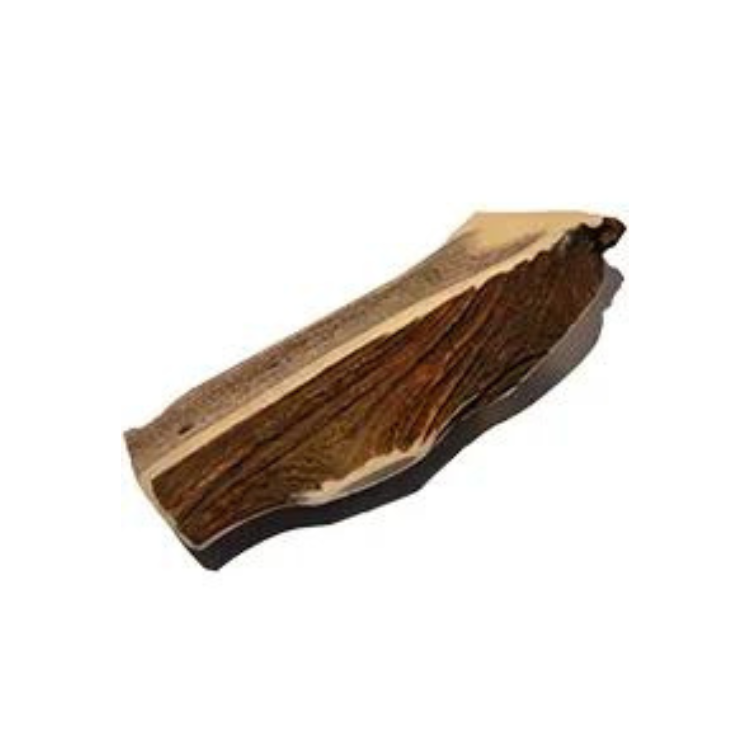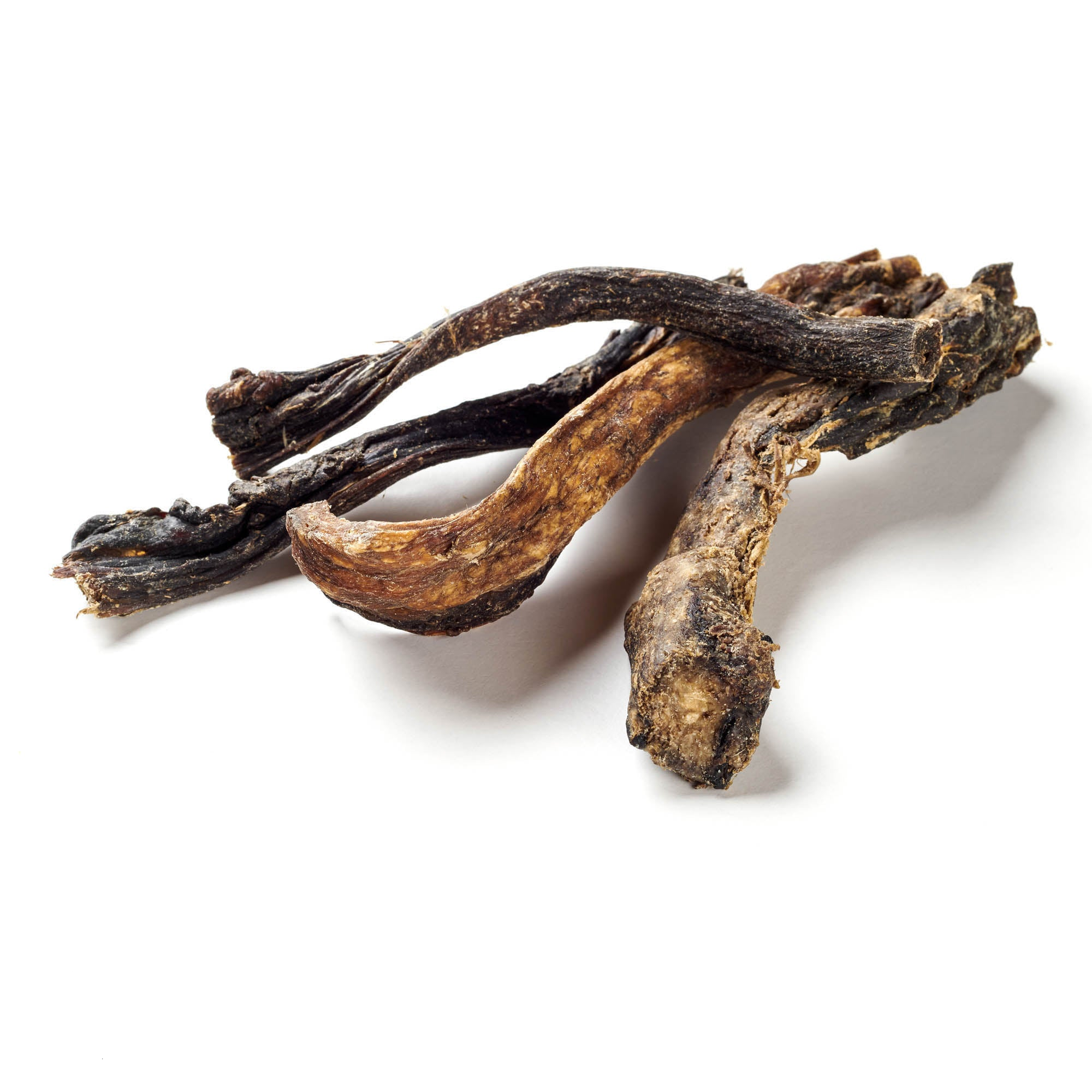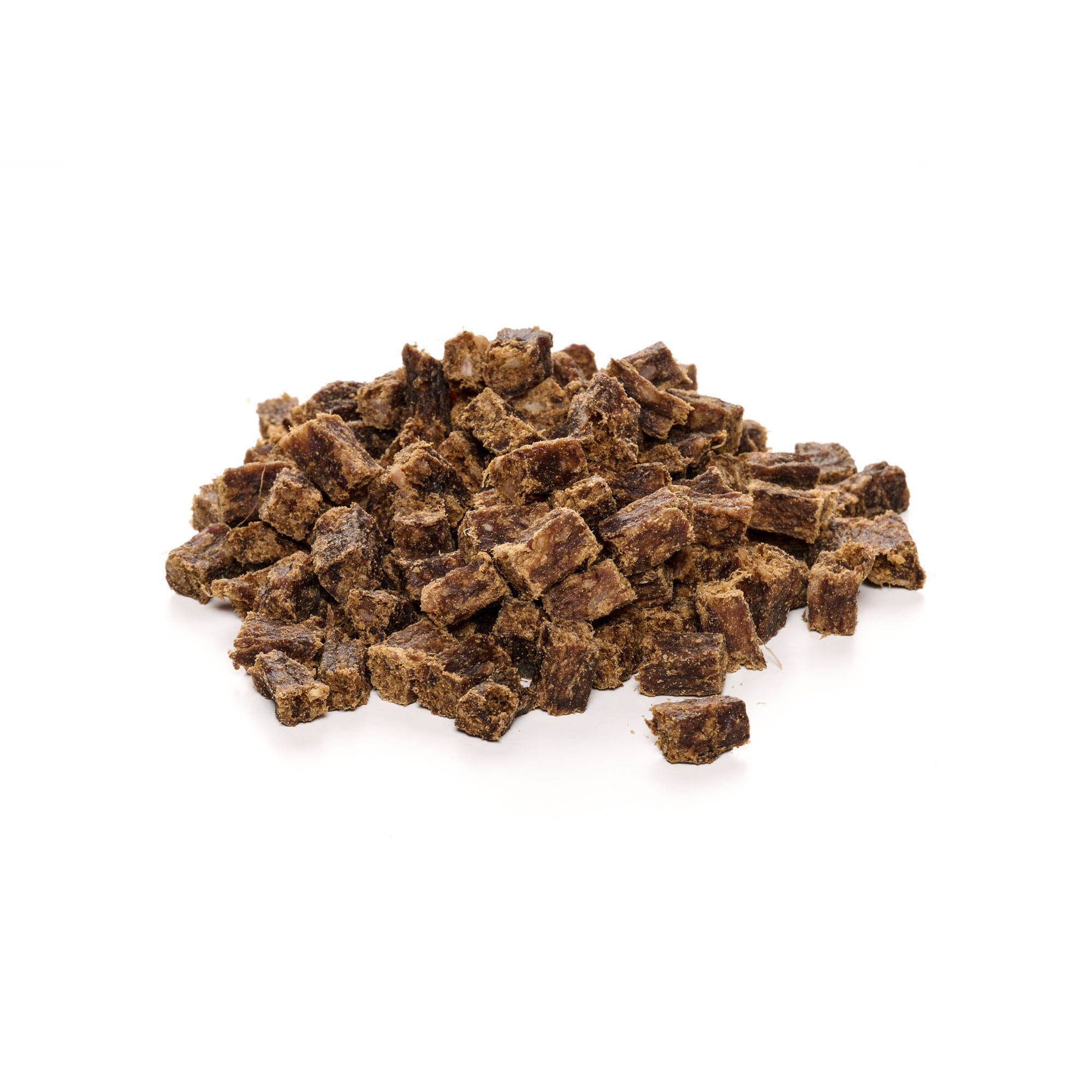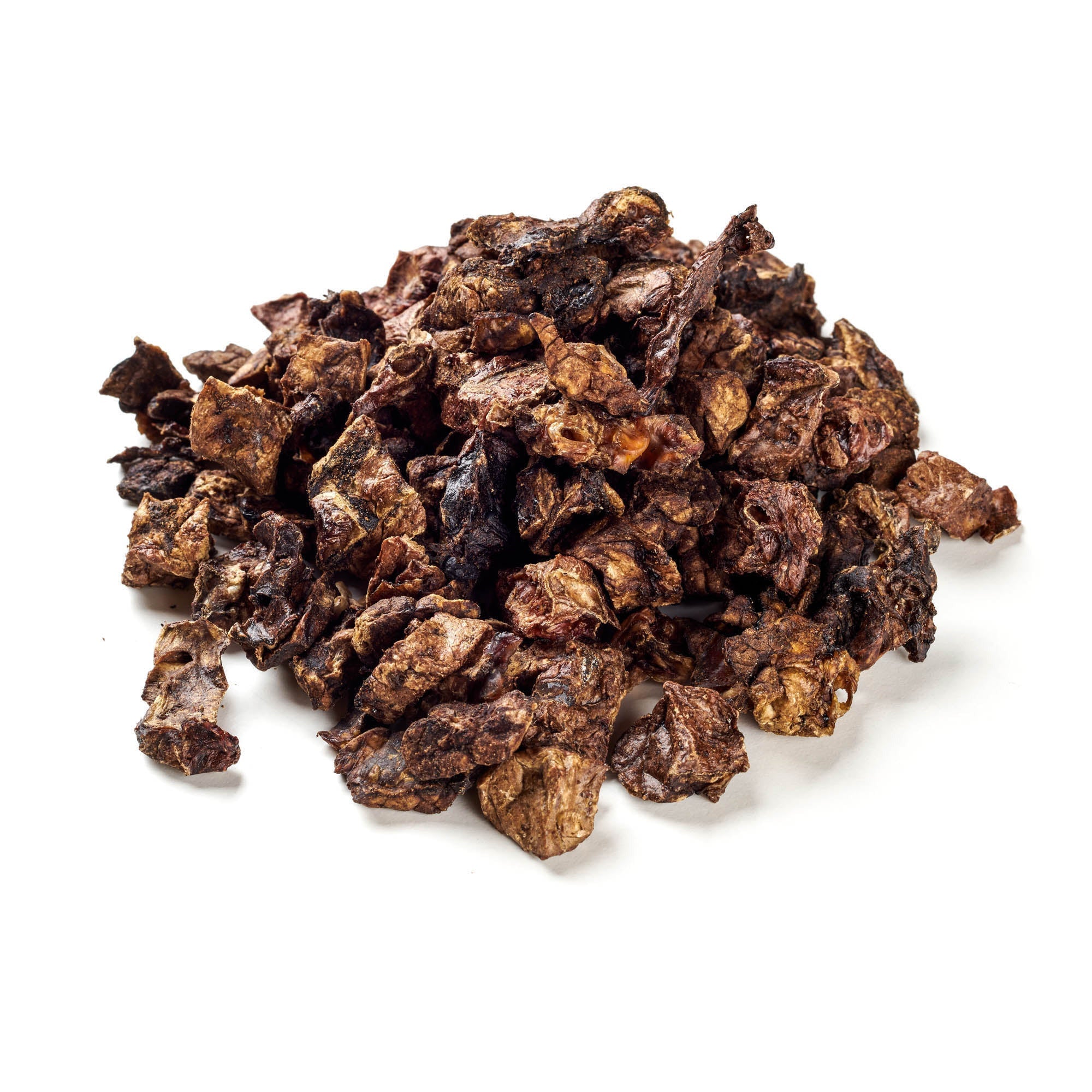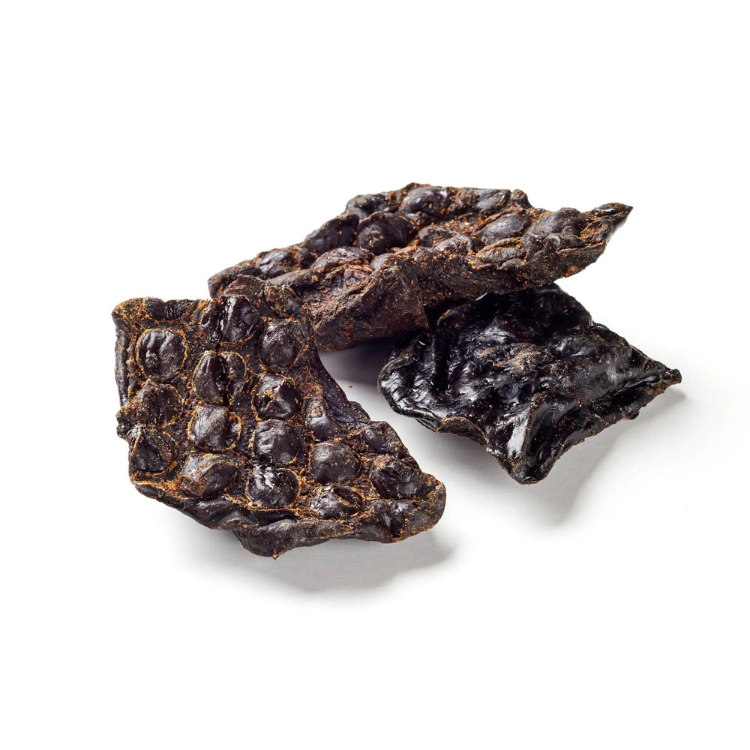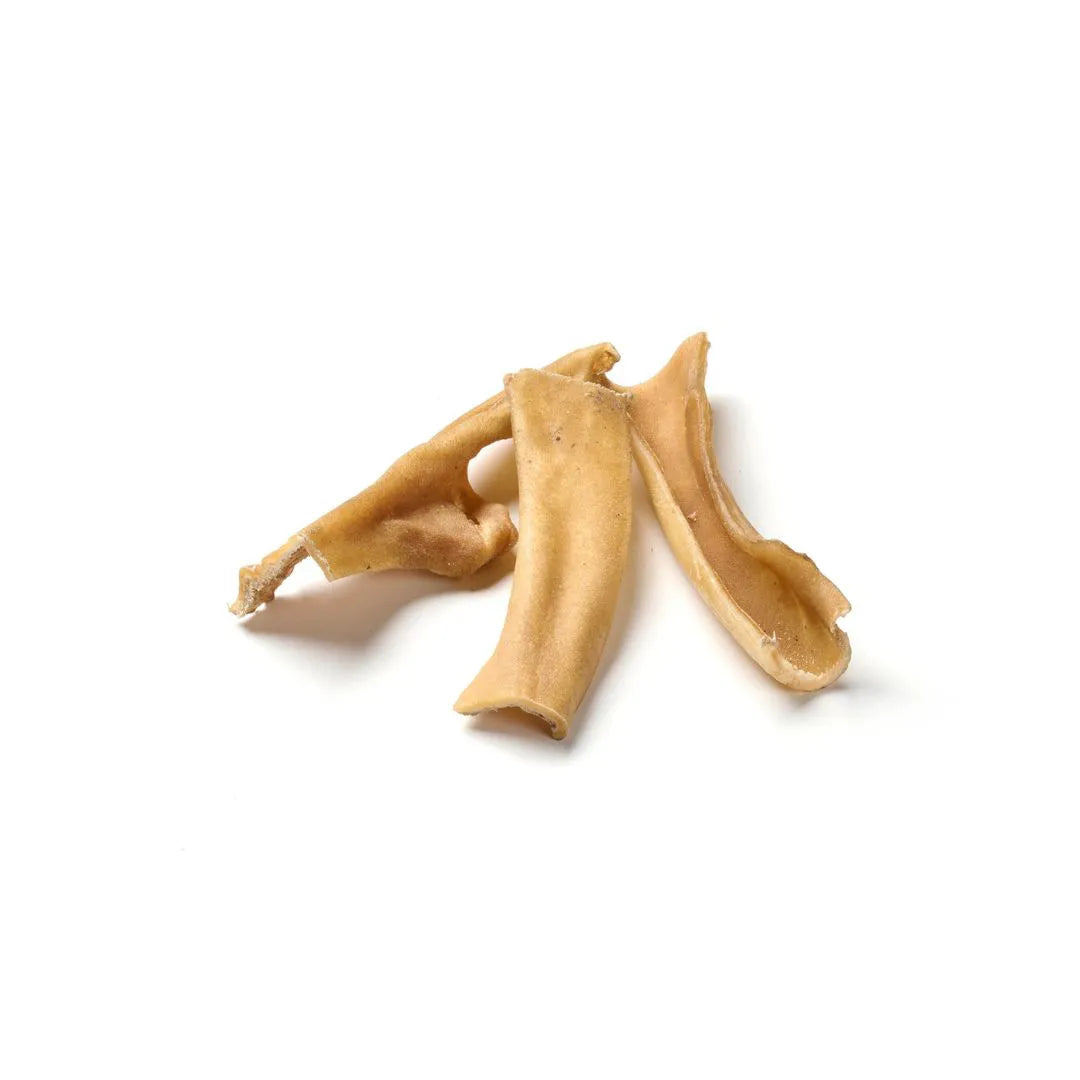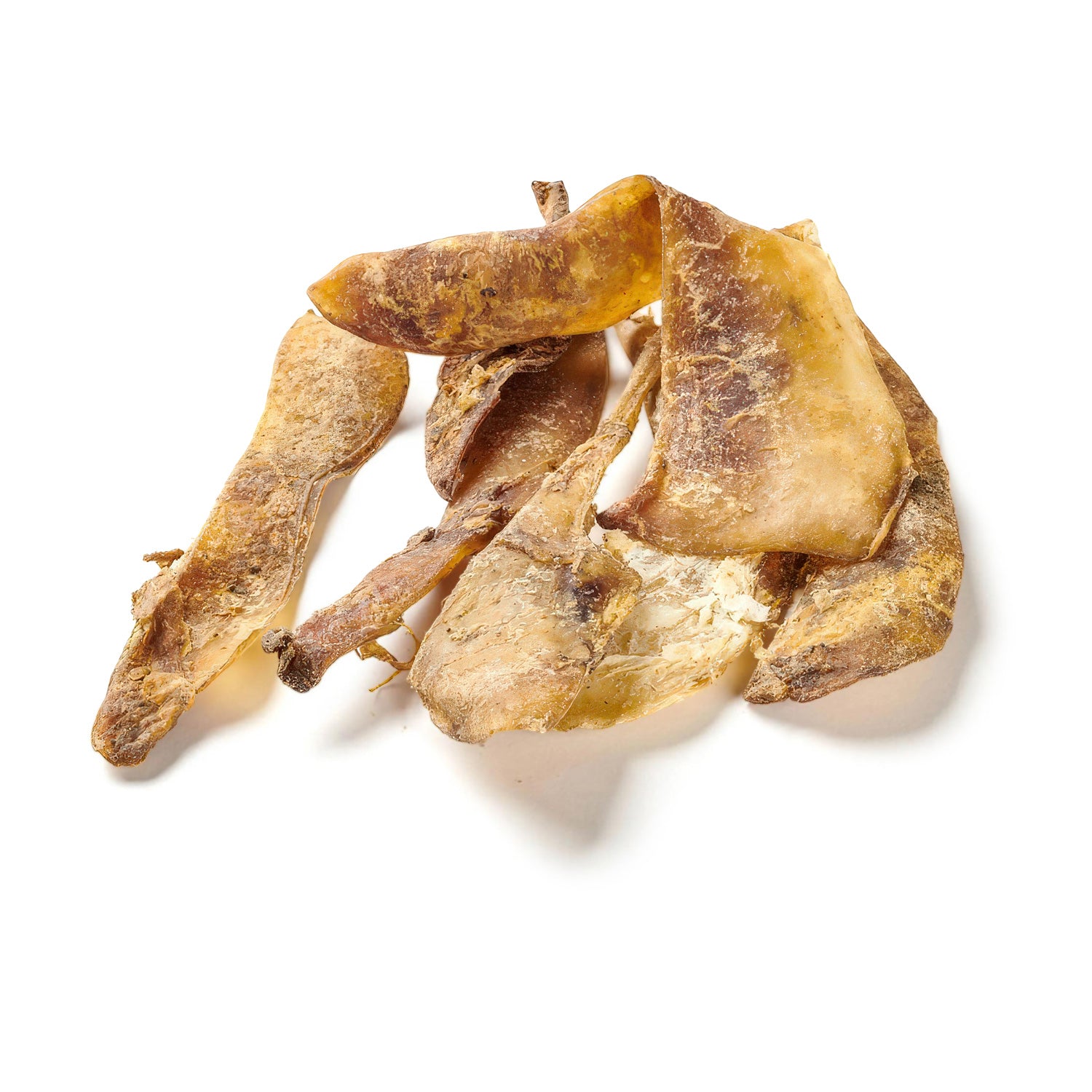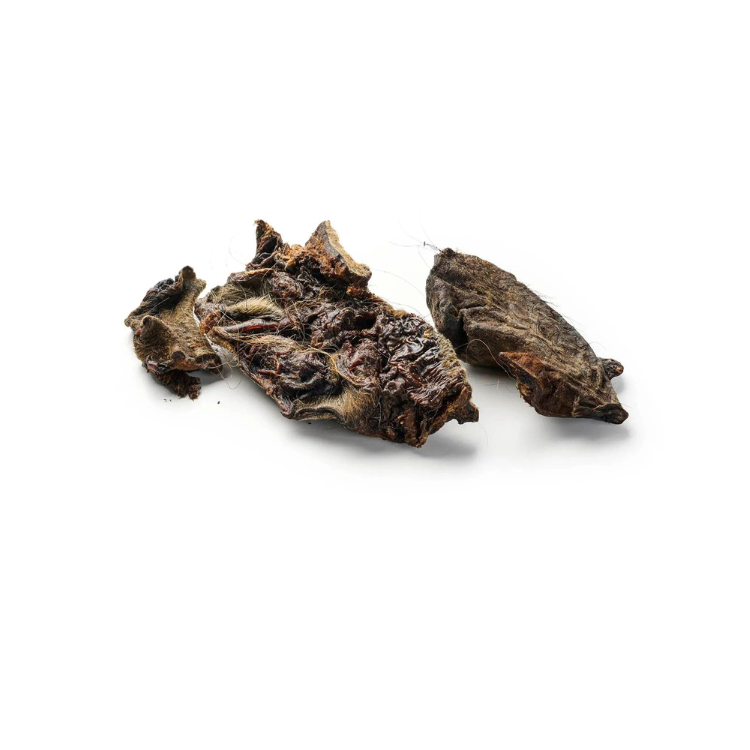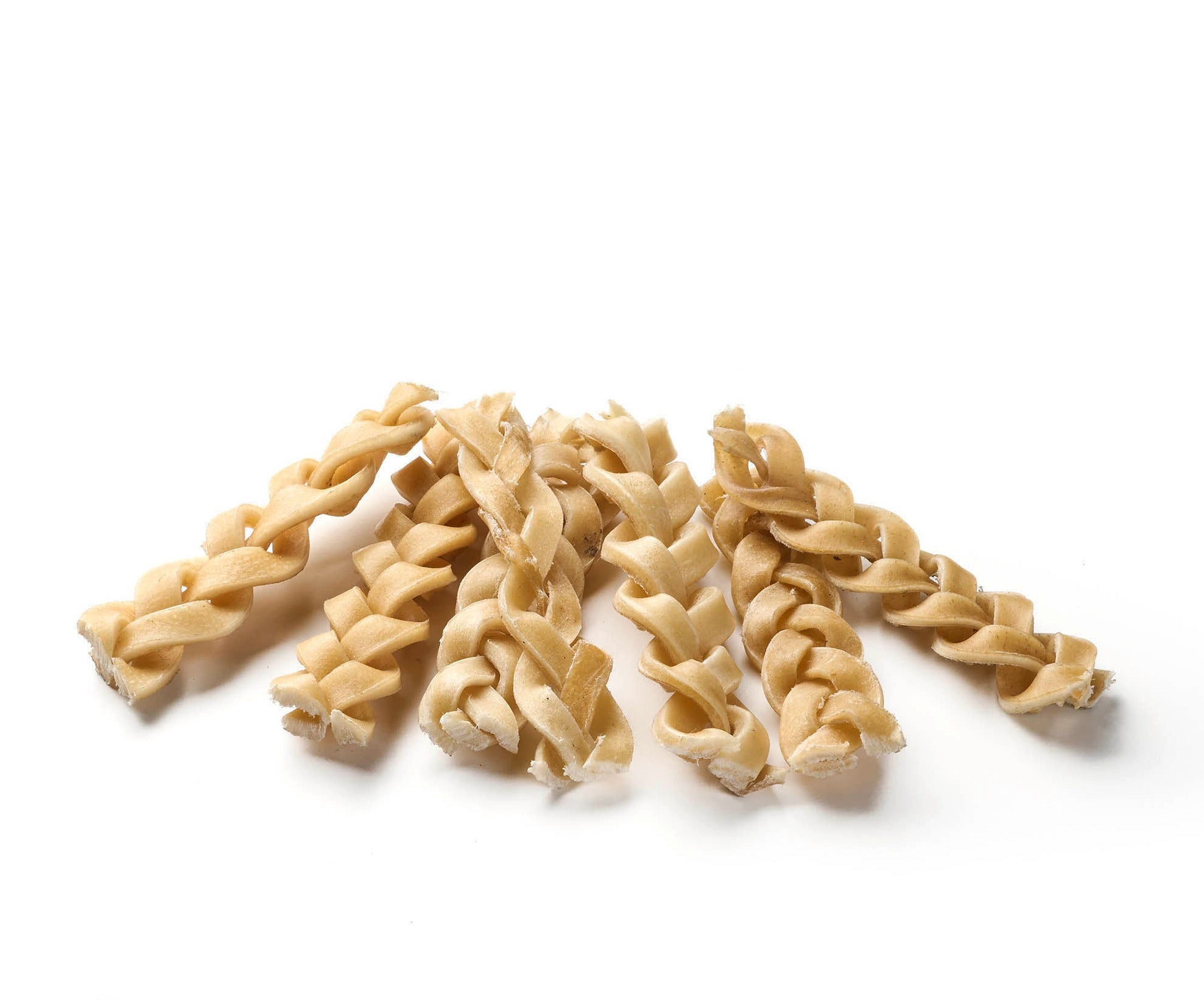
Summer fitness program for your dog
Share
Summer is the perfect opportunity to get active with your dog and improve their fitness - and yours too. With longer days and warmer weather, you and your four-legged friend can benefit from a well-structured fitness program that is both fun and healthy. Here's a comprehensive guide to getting your dog in tip-top shape while strengthening the bond between you.
Content: Summer fitness program for your dog
- Start with a health check
- Brain jogging and training
- Regular walks
- Playful activities
- To swim
- Consistency and monitoring
- Hydration and nutrition
- Heat prevention
- Conclusion
Delicious dog snacks for pure enjoyment are available from us!
Start with a health check
A comprehensive health check with your veterinarian is the first and most crucial step before starting a new fitness program for your dog. This check is not only to ensure that your dog is physically ready, but also to identify any risk factors or limitations that need to be considered during training. During this check, the veterinarian will perform a thorough palpation of your dog, listen to his heart and lungs, and may perform blood tests to ensure that there are no latent diseases.
It is also important to consider your dog's age and breed. Older dogs and certain breeds may have special needs or be more prone to certain health problems, such as arthritis or heart problems. A customized fitness plan tailored to your dog's specific health conditions and physical capacity can be discussed during this veterinary visit.
In addition, your veterinarian can provide valuable advice on how to adjust exercise to avoid overexertion and protect your dog's joint health. This could include avoiding jumping or limiting activities on unpaved surfaces to protect the joints.
Ultimately, a regular health check gives you the assurance that the fitness program you have chosen is not only effective but also safe for your dog, and helps to maintain the well-being and quality of life of your four-legged friend in the long term.
Brain jogging and training
Brain training and exercise are essential components of a holistic fitness program for your dog. The combination of mental and physical stimulation contributes to the overall health of your four-legged friend and helps to minimize behavioral problems. Here are some methods to make your dog's mental training varied and effective:
- Interactive toys: Use toys that your dog must manipulate to release treats. These encourage problem-solving skills and provide an excellent mental challenge.
- Obedience training: Integrate regular exercises for basic commands such as sit, lie down and stay. Learning new tricks challenges your dog's concentration and strengthens his cognitive flexibility.
- Sniffle Mats & Hide-and-Seek: Engage your dog in activities that utilize his sense of smell. Searching for hidden treats in a sniffle mat provides fun and challenging mental stimulation.
- Attending courses: Consider attending agility courses or nosework workshops. These not only promote mental skills, but also social skills, as they often take place in groups.
- Regular variety: Keep the training routine fresh and exciting by introducing new games and challenges. This prevents boredom and keeps your dog motivated.
By integrating these diverse activities, you ensure that your dog remains mentally active and his cognitive skills are continuously promoted.
Regular walks
Regular walks are a fundamental part of dog ownership and should actually be a given. Not only do they provide an opportunity to burn off physical energy, they are also essential for your dog's mental health.
Increase in duration and intensity
Start the walks at a leisurely pace and gradually increase it to effectively train your dog's cardiovascular system. Over time, you can increase the length and pace of the walks to ensure your dog gets an optimal cardio workout. Be careful not to overexert your dog, especially on warmer days.
Varied routes and training
Choosing different routes plays a key role in making walks exciting. New environments encourage your dog's sense of discovery and provide new smells and scenarios that contribute to mental stimulation. Whether it's park paths, urban sidewalks or forest trails, each environment offers unique stimuli and challenges.
It's also a good idea to use the walks to incorporate other aspects of training. Exercises such as loose-leash walking or the "heel" command can be incorporated into daily walks to promote both obedience and physical fitness in your dog.
Don't forget to pay attention to your dog's needs during walks, especially in terms of hydration and breaks. Regular water breaks and avoiding the midday heat are important for your dog's health and well-being.
Playful activities
Playful activities are an essential part of your dog's summer fitness program. Not only are they fun, but they also have numerous health benefits and promote bonding between you and your four-legged friend. Here are some ideas on how to incorporate playful activities into your daily routine:
Variety of games:
- Fetch: A classic game that most dogs enjoy. It develops your dog's speed and attention and gives him the satisfying feeling of completing a task.
- Frisbee: This dynamic game improves your dog's jumping ability and responsiveness. It's also a great way for him to train his speed and coordination.
- Agility training: A course with various obstacles, such as tunnels, hurdles and see-saws, that your dog has to overcome. Agility promotes mental and physical flexibility and strengthens trust and communication between you and your dog.
High-quality dog chews for your faithful companion can be found here!
Benefits of playful activities
Not only do these playful activities help improve your dog's physical fitness by keeping him active and helping him build muscle and improve his endurance, but they also provide important mental stimulation. Challenging games like agility or Frisbee keep your dog's brain engaged and promote his problem-solving skills.
At the same time, playing together strengthens the bond between you and your dog and promotes mutual trust. It also gives your dog the assurance that he is a valued part of a team. This combination of physical activity and emotional connection creates a balanced basis for your dog's well-being.
Tips for successful gaming
By using positive reinforcement, using praise and treats, you can effectively reward your dog for his achievements and motivate him to continue to do more activities. It is also important that the activities you choose are adapted to your dog's age and physical condition to avoid injuries.
By regularly incorporating playful activities into your daily routine, you ensure that your dog experiences ongoing physical and mental benefits. Incorporating these playful elements into daily training creates a balanced fitness program that is both fun and beneficial to your dog's health.
To swim
Swimming is great for dogs, if they even like it. But this low-threshold form of training is particularly suitable for older dogs with joint problems. Swimming is therefore the ideal activity for dogs of all ages and it might even make sense to convince your water-shy four-legged friend to go into the water.
To get the most out of swimming sessions, you need a safe, dog-friendly swimming spot. Suitable locations such as shallow lakes, quiet beaches or specially equipped dog pools offer what you are looking for. Your dog should be able to enter the water safely and practice his swimming skills under supervision.
Avoid places with strong currents or deep water that could be dangerous for your dog, especially if he is not an experienced swimmer. Use life jackets for extra safety, especially in deeper waters.
If all the prerequisites for swimming are met, this sport not only offers physical benefits such as strengthening muscles and improving endurance, but it is of course the best way for your dog to cool off on hot summer days. And it's fun too.
After swimming, make sure you rinse your dog thoroughly to remove any chlorine, salt or dirt from his coat. Then, you can dry him off to avoid skin irritation.
Consistency and monitoring
Consistency in performing regular fitness activities is crucial to your dog's health and well-being. By creating a set exercise schedule and following it consistently, you allow your dog to become accustomed to increased activity levels and accept fitness as a normal part of his daily routine.
At the same time, it is important to carefully monitor your dog's progress, but also to look for signs of overexertion such as excessive panting, unusual slowness, or disinterest in activities.
These signs may indicate that adjustments to your training program are necessary, so of course you shouldn't overdo it.
Hydration and nutrition
Getting enough water is the foundation for your dog's health and performance, especially during an active summer fitness program. It's crucial that your dog always has access to fresh water during exercise to avoid dehydration. A portable water bottle or collapsible bowl can come in very handy here.
When feeding your dog, the focus should be on providing a balanced diet that meets his energy needs and activity level. A diet rich in high-quality proteins, healthy fats and adequate carbohydrates will support energy supply and muscle recovery after exercise.
Natural chews are an excellent addition as they not only contribute to dental health but also strengthen the jaw muscles and support the natural need to chew.
Treat your dog to something special with our chew products!
- Dried meat: Natural meat strips or dried meat such as beef or chicken jerky are excellent sources of energy. They contain a lot of protein and can serve as a quick energy boost during long walks or workouts.
- Beef Tripe: This is another natural and high-energy chew that is very popular with dogs. Tripe is rich in nutrients and enzymes that support digestion and health.
- Fish snacks: Dried fish products, such as fish skin rolls or fish strips, provide valuable omega-3 fatty acids that not only increase energy but also promote coat and skin health.
- Dried chicken breast: These snacks are usually very low in fat and easy to digest. Dried chicken breast is high in protein and can be eaten quickly in small pieces.
Consulting with a veterinarian can be helpful to ensure your dog's diet is optimally tailored to his individual needs. By providing the right balance of hydration, nutritious meals and natural snacks, you can help your dog get through the summer active, healthy and happy.
Heat prevention
Unlike humans, dogs cannot sweat to regulate their body temperature. Instead, they pant to dissipate heat. However, this method is not always efficient in extreme heat, so it is important to avoid any physical activity during the hottest hours of the day.
Plan your dog's walks and exercises for the early morning or late evening when temperatures are milder. This precaution will protect your dog - and you too - from overheating. If the temperature is particularly high, it is advisable to avoid any physical activity and to retreat to a cool, shady place with your four-legged friend.
Make sure your dog always has access to fresh water to ensure adequate hydration. Monitor his condition carefully and look for signs of heat stroke, such as excessive panting, increased heart rate, lethargy or disorientation. If you see any of these symptoms, immediately move your dog to a cooler environment and use wet towels to gently cool him down. Avoid using very cold water, as this can cause shock.
Paw care is also important, as hot asphalt can burn your dog's paws. Check surfaces before letting your dog walk on them. If they are too hot to touch, they are too hot for your dog's paws. Consider whether special protective shoes are a wise investment in extremely hot climates.
Conclusion
Your dog's summer fitness program is an excellent opportunity to take advantage of the warmer months to improve both your dog's physical and mental health.
However, it is essential to have a comprehensive health check with a veterinarian before starting the program. This will ensure that your dog is fit enough for increased physical activity and that any health conditions, such as arthritis or heart problems, which can be particularly common in older or certain breeds, are taken into account.
Your veterinarian can also offer valuable advice on adjusting exercise to avoid overexertion and protect joint health. With this preventative approach and thoughtful planning of activities - from mentally stimulating games to regular walks and swims - you can ensure your dog lives an active, healthy and happy life.
Always pay attention to your dog's signals, especially in summer conditions, and adjust the intensity of activities accordingly to avoid overheating and dehydration.
Delicious dog snacks for pure enjoyment are available from us!



